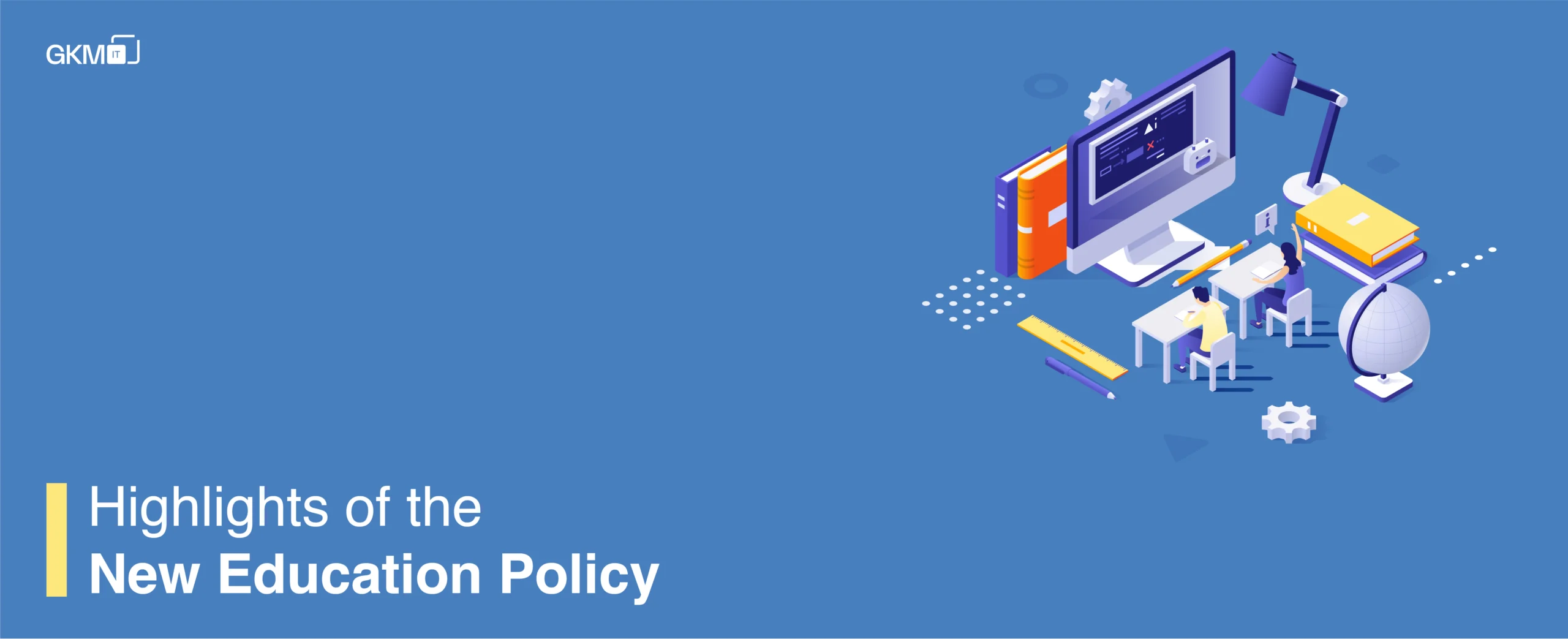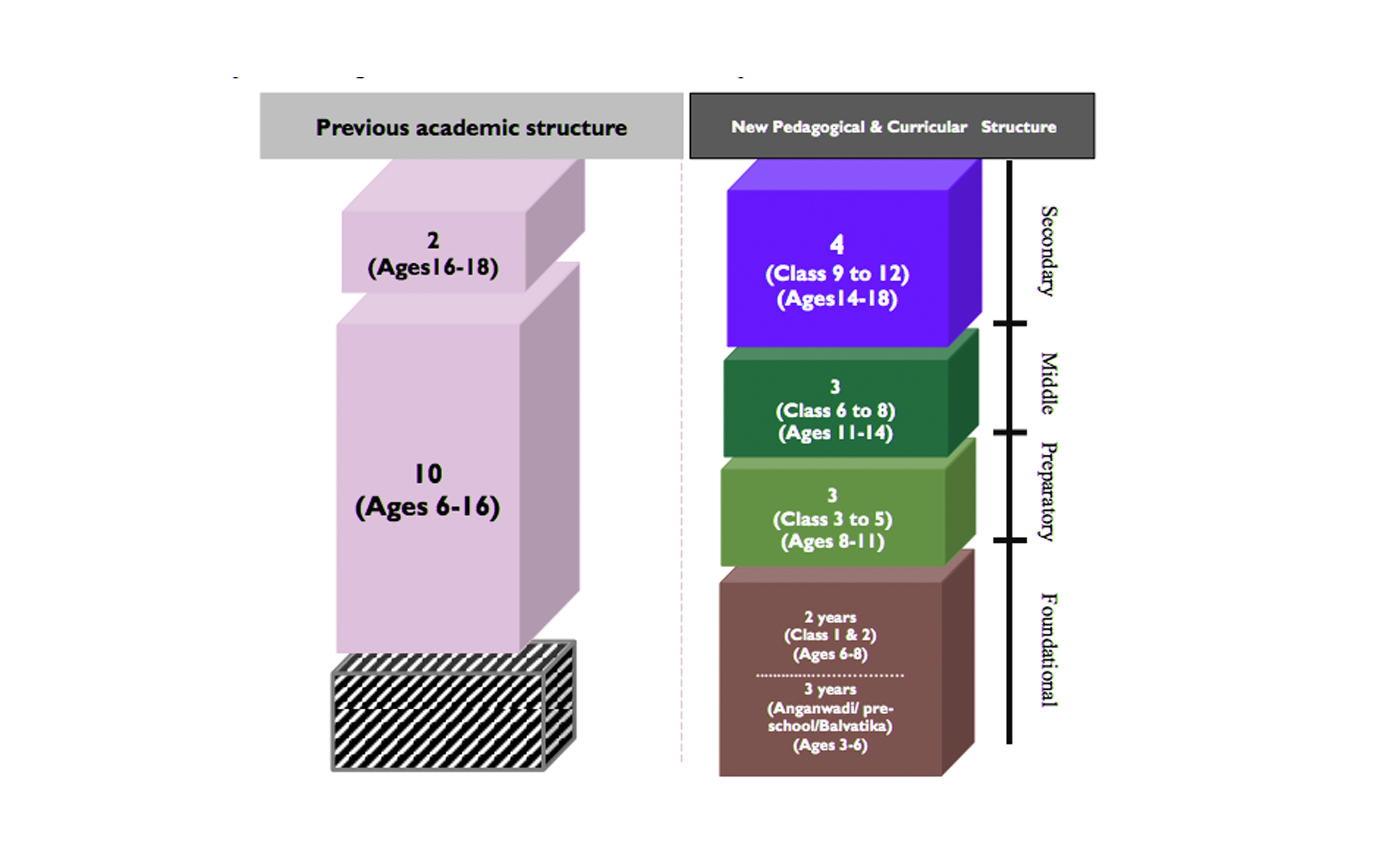
Highlights of the New Education Policy 2020
The new education policy (NEP) is released by the union of human resource development minister Ramesh Pokhriyal for school and higher education (colleges, universities and higher institutes). They rename even the Ministry of Human Resource Development as the Ministry of Education.
As we all know education is a fundamental right and for achieving full human potential, development of equitable and just society and for national development education is inevitable. Quality education is the right of everyone and is a key to India’s continued ascent in terms of economic growth, social justice, equality, scientific advancement, cultural preservation and national integrity.
To maximize our country’s rich talent and resources, high-quality education is the best way. By next decade India will have the highest population of young people in the world. And with our ability to provide high-quality educational opportunities, we will determine the future of our country.
“The global education development agenda reflected in the Goal 4 (SDG4) of the 2030 Agenda for Sustainable Development, adopted by India in 2015 – seeks to “ensure inclusive and equitable quality education and promote lifelong learning opportunities for all” by 2030.”- as quoted by – https://www.mhrd.gov.in/
For such a goal, the entire education system requires reconfiguration, support and foster learning.
Principles of new education policy 2020
The new era and changing scenario call for a good institution. Let me explain the definition of “Good Institute”– a good education institute is a place where every student feels welcomed and cared for, where every individual gets safe and stimulating learning and experience wide learning range with good infrastructure and appropriate resources. This is the current goal of achieving standard educational institutions. Across the stages of education, seamless integration and coordination is a big yay.
Let’s check the fundamental principles that will help guide education systems
- Recognizing, identifying, and fostering the unique capabilities of each student, by sensitizing teachers as well as parents to promote each student’s holistic development in both academic and non-academic spheres;
- According to the highest priority to achieving Foundational Literacy and Numeracy all students from Grade 3;
- Flexibility so that learners have the ability to choose their learning trajectories and programs, and thereby choose their own paths in life according to their talents and interests;
- No hard separations between arts and sciences, between curricular and extra-curricular activities, between vocational and academic streams, etc. In order to eliminate harmful hierarchies and silos between different areas of learning;
- Multi-disciplinary and holistic education across the sciences, social sciences, arts, humanities, and sports in a multidisciplinary world in order to ensure the unity and integrity of all knowledge;
- Emphasis on conceptual understanding rather than rote learning and learning-for-exams;
- Creativity and critical thinking to encourage logical decision-making and innovation;
- Ethics and human & Constitutional values like empathy, respect for others, cleanliness, courtesy, democratic spirit, a spirit of service, respect for public property, scientific temper, liberty, responsibility, pluralism, equality, and justice;
- Promoting multilingualism and the power of language in teaching and learning;
- Life skills such as communication, cooperation, teamwork, and resilience;
- Focus on regular formative assessment for learning rather than the summative assessment that encourages today’s ‘coaching culture ’;
- Extensive use of technology in teaching and learning, removing language barriers, increasing access for Divyang students, and educational planning and management;
- Respect for diversity and respect for the local context in all curriculum, pedagogy, and policy, always keeping in mind that education is a concurrent subject;
- Full equity and inclusion as the cornerstone of all educational decisions to ensure that all students are able to thrive in the education system;
- Synergy in curriculum across all levels of education from early childhood care and education to school education to higher education;
- Teachers and faculty as the heart of the learning process – their recruitment, continuous professional development, positive working environments and service conditions;
- A‘light but tight’ regulatory framework to ensure integrity, transparency, and resource efficiency of the educational system through audit and public disclosure while encouraging innovation and out-of-the-box ideas through autonomy, good governance, and empowerment;
- Outstanding research as a Corequisite for outstanding education and development;
- Continuous review of progress based on sustained research and regular assessment by educational experts;
- A rootedness and pride in India, and its rich, diverse, ancient and modern culture and knowledge systems and traditions;
- Education is a public service; access to quality education must be considered a basic right of every child;
- Substantial investment in a strong, vibrant public education system as well as the encouragement and facilitation of true philanthropic private and community participation.
The vision of new education policy-
Part- I: School Education
This policy envisages that the extant 10+2 structure in school education will be modified with a new pedagogical and curricular restructuring of 5+3+3+4 covering ages 3-18 as shown in the representative figure

Part II. HIGHER EDUCATION
- Quality Universities and Colleges: A New and Forward-looking Vision for India’s Higher Education System
- Institutional Restructuring and Consolidation
- Towards a More Holistic and Multidisciplinary Education
- Internationalization
- Motivated, Energized, and Capable Faculty
- Equity and Inclusion in Higher Education
- Teacher Education
- Reimagining Vocational Education
- Catalyzing Quality Academic Research in All Fields through a new National Research Foundation
- Transforming the Regulatory System of Higher Education
- Curbing Commercialization of Education
- Effective Governance and Leadership for Higher Education Institutions
Part III. OTHER KEY AREAS OF FOCUS
- Professional Education
- Adult Education and Lifelong Learning
- Promotion of Indian Languages, Arts, and Culture
- Technology Use and Integration
- Online and Digital Education: Ensuring Equitable Use of Technology
- Creating a Dedicated Unit for Building of World-Class Digital Infrastructure, Educational Digital Content and Capacity
Part IV. MAKING IT HAPPEN
- Strengthening the Central Advisory Board of Education
- Financing: Affordable and Quality Education for All
- Implementation
Checkpoints for new education policy 2020 (NEP2020):
- School complexes to be used for adult education courses after school hours
- More focus on vocational studies in school level
- NIOS to develop high-quality modules for Indian Sign Language
- Pre- school section in Kendriya Vidyalaya
- NCC wings in secondary and higher secondary schools under the Ministry of Defense
- Free boarding facilities in JNV (Jawahar Navodaya Vidyalayas)
- Dedicated unit for digital and online learning.
- National Scholarship Portal for SC, ST, OBC, and SEDG students is to be expanded
- Minimum qualification for teaching: 4 years integrated B.Ed degree
- HECI—common regulatory body for entire higher education
- Various new provisions for children with disabilities
- Education sector is to get 6% of GDP; earlier it was 1.7%
- Bag-less days encouraged
- Three languages learned by children will be the choice of state regions and students
- The medium of instruction will be the local/ regional language
- Indian Sign Language to be standardized across the country
- No hard separation of streams for students
- Experiential learning in all stages
Read detailed information about the above points on School and higher education to see major changes and major New education policy highlights
The outcome of the new education policy 2020
- The common standard of learning is to be maintained by private and public schools.
- Every child’s skill is developed so when they pass school they have their unique talent and skills.
- Board exam to test the core concept and application of knowledge
- 100% GER in preschool to secondary level
- By 2023, teachers to be prepared for assessment reforms.
- An equitable and inclusive education system by 2030
- Attaining foundational learning & numeracy skills
- Mother tongue to be medium of instruction till grade 5
source: All you need to know about new education policy.
I tried to add all minute details and linked to the true source. Let me know your reviews on New Education policy 2020 by leaving a comment on this article or you can mail me at [email protected]
Related Blogs –
Running Effective Meetings 2024 Insights Session
Software Defect Life Cycle Problems Solutions And A Way To Bring More Business
Wwdc 2018 Key Note And Updates
Tips On How To Reduce Mobile App Development Cost